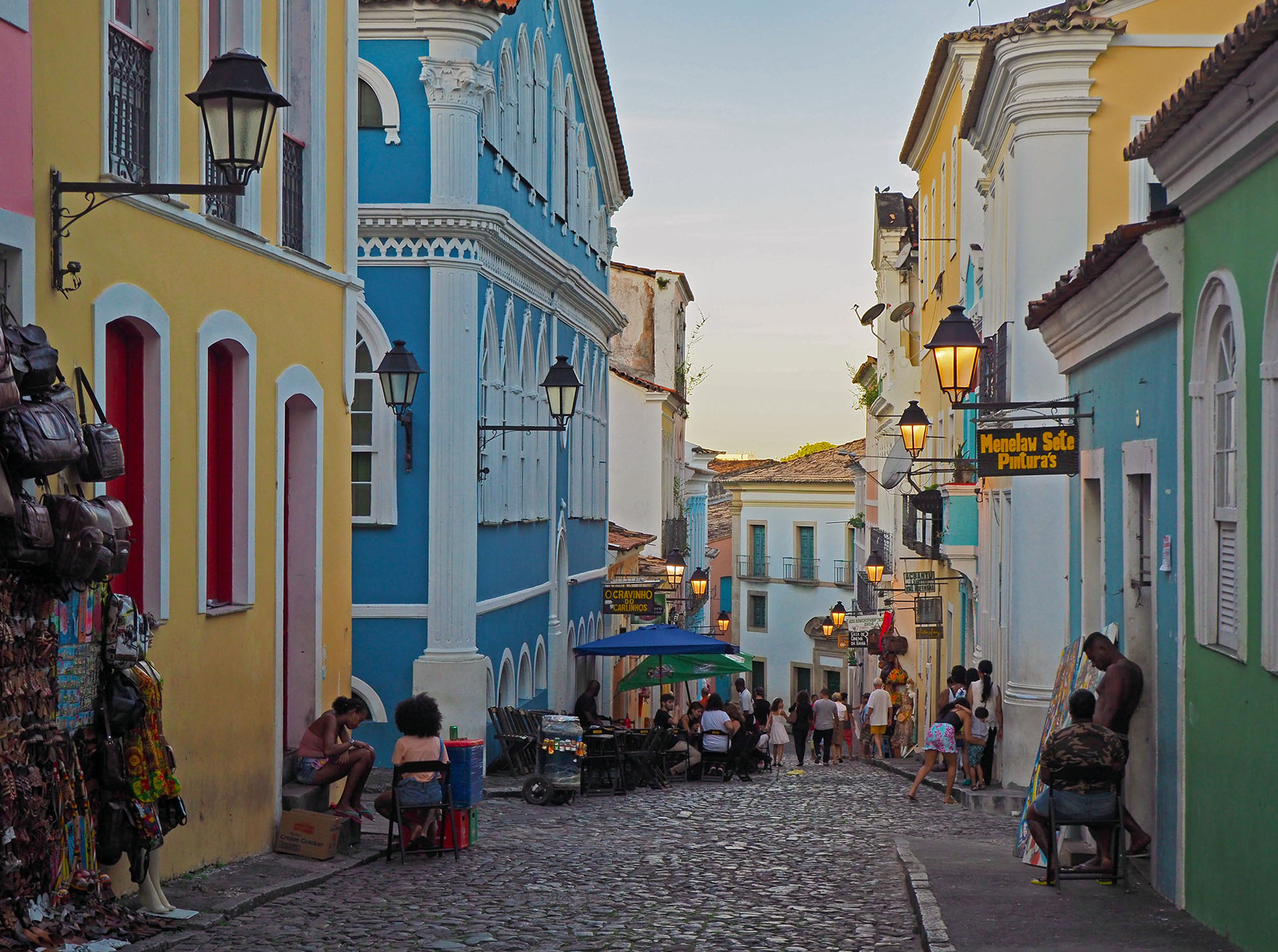Salvador da Bahia, Brazil’s African soul
December 2018
Published 2 Sep 2020
December 2018
Published 2 Sep 2020
They say a lot that Salvador is a piece of Africa in Brazil. Indeed, many African slaves were brought to the former capital of the country with their own customs, culture and religions, which in turn blended in and now make one of the warmest, most original branches of the Brazilian culture. This is Bahia.
The Old Town of Salvador, called the Pelourinho, feels like Portugal. Colonial houses and churches line up and down the narrow cobblestone streets, painted in all kinds of colors. The streets are full, music and candomblé are everywhere, and capoeira shows happen very often. Women dressed as bahianas, and a lot of other people, are looking for tourists to get some cash.
Bahian cuisine is considered to be one of the most particular in Brazil, with the acaraje, a dendê oil-fried bun with shrimps and other stuff inside, happening everywhere. It was not what I enjoyed the most, though; a good moceca, a coconut milk kind of stew with, most of the time, fish and shrimps, was incredible.
We stayed and spent most of the time in the Pelourinho. Although it might be a little small, the city is a lot bigger, but the rest we saw were average beach neighbourhoods and some other uninteresting places. The famous Igreja do Bonfim was one of those.
We came back to Salvador a couple of other times as a stop on our route to somewhere else, and it was always nice. A short walk on the small Pelourinho gave us enough Afro-Brazilian energy to continue our trip, and even some hours in there can give you the feel of Bahia. And the feel of Africa, eventually.
Stay: Hostel Galeria 13
Restaurante do Museu
Museu da Gastronomia Bahiana



